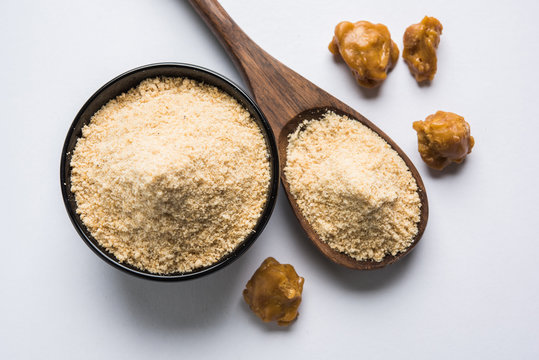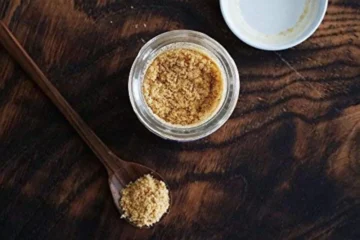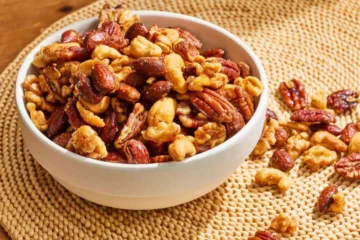What dishes can I use hing and other spice combinations in?
Short Summary: Hing can be used in lentils, curries, stir-fries, pickles, and chutneys to enhance flavor.
Hing, also known as asafoetida, can elevate a variety of dishes. Here are some dishes where hing and other spice combinations shine:
- Lentils and Dals: Hing is a staple in many lentil dishes, offering depth and umami. From simple dals to elaborate sambar, hing can bring out the flavors of lentils, making the dishes heartier and more satisfying.
- Curries: Whether it’s a rich curry or a light broth, hing adds a distinctive flavor. It works well in both vegetarian and non-vegetarian curries, adding a layer of complexity that enhances the taste of other spices.
- Stir-fries: A pinch of hing in vegetable stir-fries can transform the taste profile. It blends well with various vegetables, adding an aromatic touch that makes stir-fries more appealing and delicious.
- Pickles and Chutneys: Hing pairs well with the tangy and spicy notes in pickles and chutneys. It enhances the flavors and adds a unique twist to traditional recipes, making them more vibrant and flavorful.
- Rice Dishes: A touch of hing in fried rice or pulao adds complexity. It complements the spices used in rice dishes, creating a harmonious balance that makes the dishes more enjoyable.
Which spices work best with hing for different cuisines?
Short Summary: Hing pairs well with cumin, coriander, turmeric, mustard seeds, and fenugreek across different cuisines.
Hing’s pungent aroma can be harmonized with various spices across different cuisines. Here are some spices that complement hing effectively:
- Cumin: Common in Indian and Middle Eastern cuisines, cumin and hing together create a warm, earthy flavor. The nutty taste of cumin balances the strong scent of hing, making them a perfect match in many dishes.
- Coriander: The citrusy notes of coriander balance the strong scent of hing in many dishes. Coriander’s fresh, herbaceous flavor works well with hing, adding a bright contrast that enhances the overall taste.
- Turmeric: This spice adds a vibrant color and health benefits, blending well with hing’s intensity. The warm, slightly bitter taste of turmeric complements hing, creating a well-rounded flavor profile.
- Mustard Seeds: Used in South Indian and Bengali dishes, mustard seeds and hing enhance each other’s flavors. The sharp, pungent taste of mustard seeds pairs well with hing, making the combination ideal for pickles, curries, and tempering.
- Fenugreek: With its slightly bitter taste, fenugreek pairs with hing in pickles and spicy curries. Fenugreek’s unique flavor adds depth to dishes, making it a great companion to hing in various recipes.
Are there any health benefits to using hing with other spices?
Short Summary: Hing, combined with other spices, can aid digestion, reduce inflammation, and improve respiratory health.
Hing, when used with other spices, offers several health benefits. Here are some of the key benefits:
- Digestion: Hing is known for its digestive properties, helping to reduce bloating and gas. Combined with cumin and coriander, it can promote better digestion, making your meals not only tasty but also beneficial for your digestive system.
- Anti-inflammatory: Turmeric, when paired with hing, can enhance anti-inflammatory effects, benefiting those with arthritis or other inflammatory conditions. The combination of these spices can help reduce inflammation and promote overall health.
- Respiratory Health: Hing can help alleviate respiratory issues. When used with spices like ginger and black pepper, it can help in clearing congestion and improving breathing. This combination is particularly effective during cold and flu seasons.
- Antioxidant Properties: The combination of hing with spices such as turmeric and fenugreek provides a boost of antioxidants, which help in fighting free radicals and maintaining overall health. Regular consumption of these spices can contribute to long-term wellness.
How do I balance the flavor when using hing with potent spices like garlic or mustard seeds?
Short Summary: To balance hing with potent spices, use small quantities, pair with mild spices, and adjust cooking times.
Balancing hing with potent spices requires careful consideration of quantities and cooking methods. Here’s how to achieve the perfect balance:
- Use Small Quantities: A small pinch of hing can go a long way. Start with a tiny amount and adjust as needed to avoid overpowering the dish.
- Pair with Mild Spices: Balance strong flavors by pairing hing with milder spices like cumin or coriander. This helps in creating a harmonious blend without any single spice dominating the dish.
- Adjust Cooking Times: Add hing at the beginning to mellow its flavor and blend with other spices, while adding potent spices like garlic towards the end to retain their distinct taste. This layering technique ensures that each spice contributes to the overall flavor without clashing.
- Layer Flavors: Build layers of flavor by adding spices at different stages of cooking. This helps in balancing strong aromas and creating a harmonious dish. For example, start with hing and then add garlic or mustard seeds later in the cooking process.
Are there any common mistakes to avoid when pairing hing with other spices?
Short Summary: Common mistakes include using too much hing, pairing with incompatible spices, and not cooking it properly.
Avoiding common mistakes when pairing hing with other spices can enhance the flavor of your dishes. Here are some pitfalls to watch out for:
- Using Too Much Hing: Excessive hing can overpower other flavors. Use sparingly to maintain a balanced taste.
- Pairing with Incompatible Spices: Some spices may not blend well with hing. Avoid pairing it with sweet spices like cinnamon or nutmeg.
- Not Cooking Properly: Hing should be cooked briefly in oil to release its full flavor. Adding it directly to dishes without cooking can result in a raw, overpowering taste.
- Ignoring Storage Tips: Store hing in an airtight container to maintain its potency and avoid contamination with other spices.
Conclusion
Hing, or asafoetida, is a versatile spice that can transform your culinary creations when paired correctly with other spices. By understanding the best combinations, potential health benefits, and common mistakes to avoid, you can master the art of using hing in your kitchen. Whether you’re preparing a simple lentil dish or an elaborate curry, hing can add a unique depth of flavor that elevates your meals to new heights.





